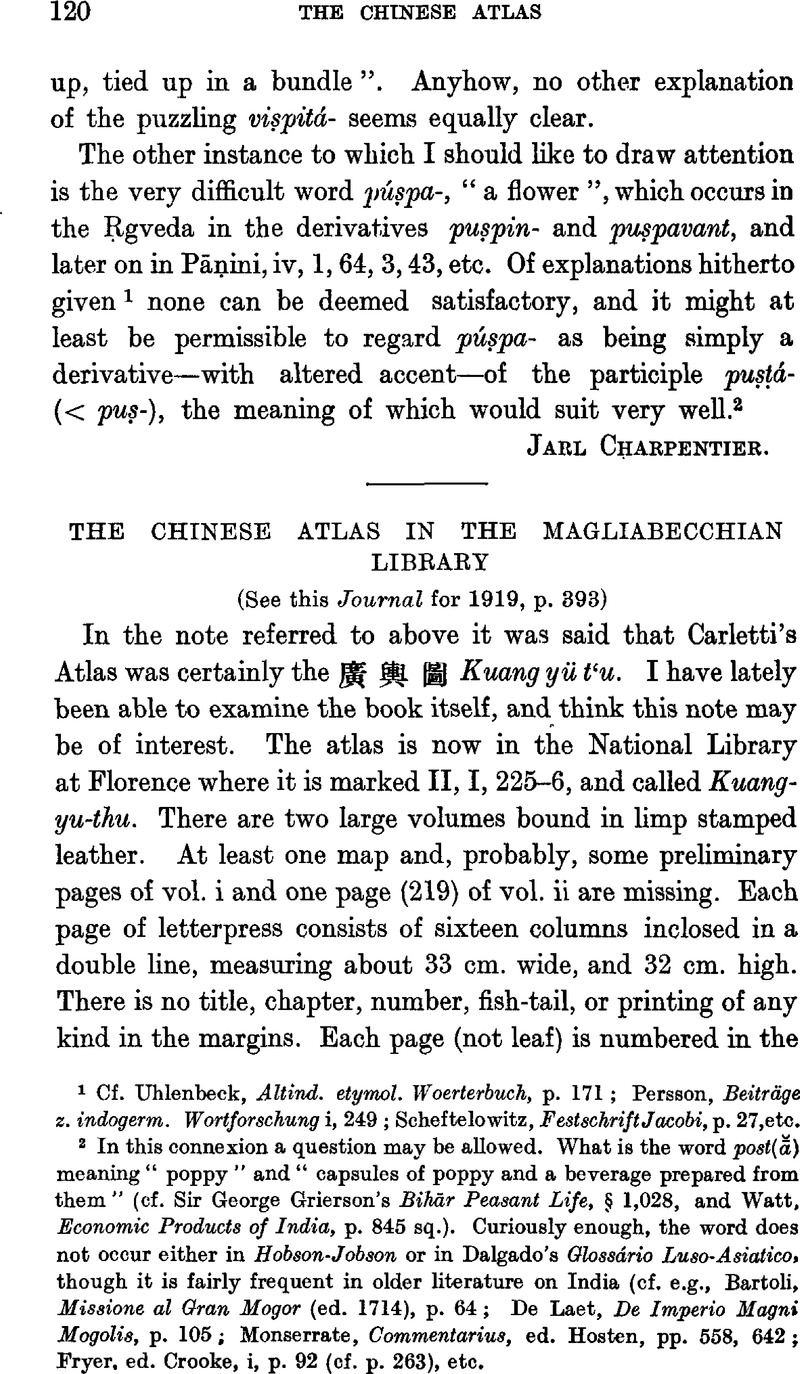No CrossRef data available.
Article contents
The Chinese Atlas in the Magliabecchian Library
Published online by Cambridge University Press: 15 March 2011
Abstract

- Type
- Miscellaneous Communications
- Information
- Copyright
- Copyright © The Royal Asiatic Society 1927
References
page 120 note 1 Cf. Uhlenbeck, , Altind. etymol. Woerterbuch, p. 171Google Scholar; Persson, , Beiträge z. indogerm. Wortforschung i, 249Google Scholar; Scheftelowitz, , Festschrift Jacobi, p. 27, etcGoogle Scholar.
page 120 note 2 In this connexion a question may be allowed. What is the word post(ā) meaning “poppy” and “capsules of poppy and a beverage prepared from them” (cf. Sir George Grierson's Bihār Peasant Life,§ 1, 028, and Watt, , Economic Products of India, p. 845 sq.)Google Scholar. Curiously enough, the word does not occur either in Hobson-Jobson or in Dalgado's Glossário Luso-Asiatico, though it is fairly frequent in older literature on India (cf. e.g., Bartoli, , Missione al Gran Mogor (ed. 1714), p. 64Google Scholar; Laet, De, De Imperio Magni Mogolis, p. 105Google Scholar; Monserrate, , Commentarius, ed. , Hosten, pp. 558, 642Google Scholar; Fryer, ed. Crooke, i, p. 92 (cf. p. 263), etc.




